
Going into primary 1 is a milestone for graduating kindergarteners. New school, new friends, and also new math topics to learn! Primary 1 math can feel very different as P1 students extend their previous understanding from kindergarten math. Your little ones may need time to adjust, and making mistakes while they are learning new math concepts is natural.
To help your child as they build the foundation for primary 1 math, we’ve started the Top 3 Common Math Mistakes and How to Avoid Them series. We asked our excellent, in-house Spark Math teachers to share what they’ve observed over their teaching career. Here’s Teacher Shaun with the top 3 common P1 math mistakes and his tips on how your child can avoid them!
Common Mistake #1: Errors in Regrouping
One common mistake that P1 students often make is errors in regrouping while doing subtraction. For example, let’s look at the question below and the common mistake students may make.
Common Mistake
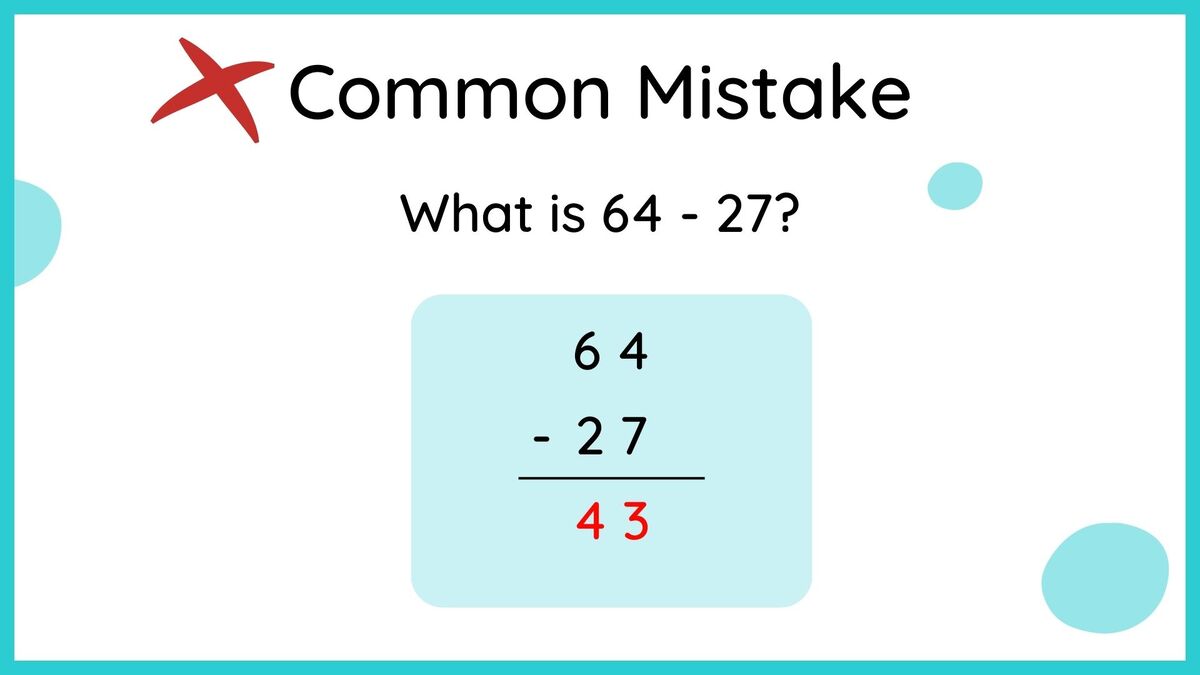
Students make mistakes in their calculations by using a smaller digit to subtract the bigger digit (4 – 7 = 3). Young learners can find it hard to visualise the regrouping of numbers, as it is an abstract concept for them.
Solution
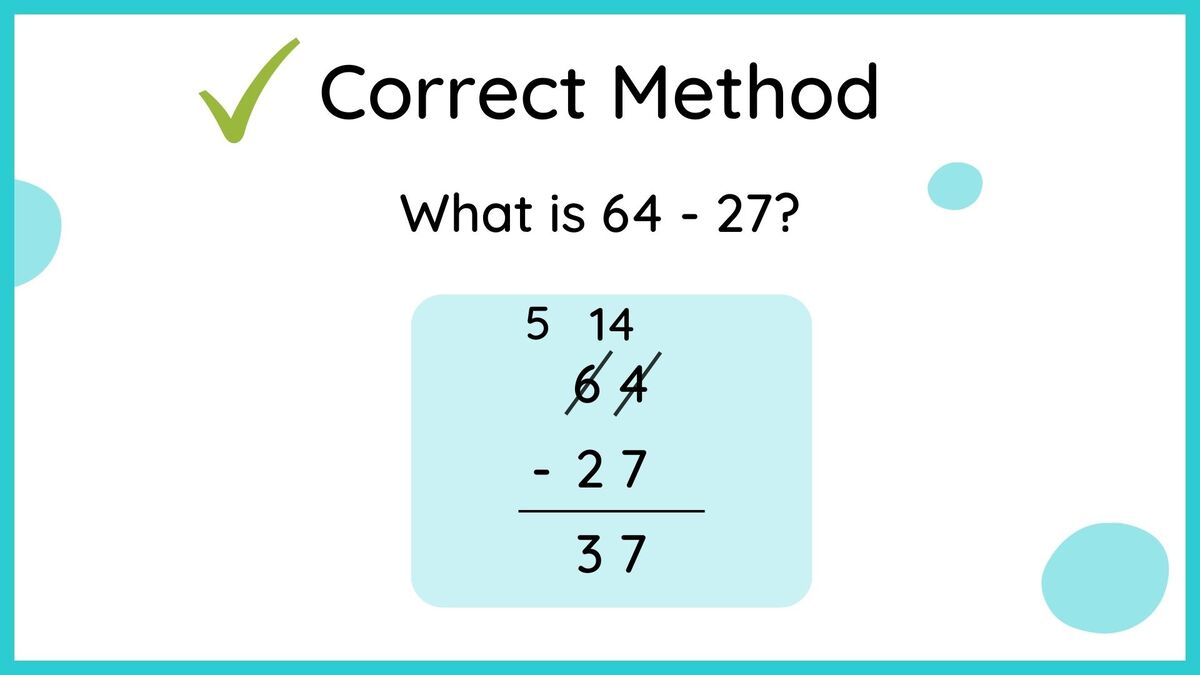
How to prevent this mistake
Parents can help their child visualise the process of regrouping by using manipulatives such as base ten blocks or drawing pictures. These manipulatives provide an easier way for children to see the difference between ones, tens, hundreds, and thousands.
You can get your child to count the units and group them into a bar of tens. For subtraction, let them swap a ten bar for ten single units and take away the number that needs to be subtracted. In this way, they can picture the subtraction process better and avoid errors in regrouping.
Common Mistake #2: More Means Add, Less Means Minus
Another common misconception that P1 students make is often found in comparison questions. Students tend to do addition when they see the word “more”, and to do subtraction when they see the word “less”.
Common Mistake
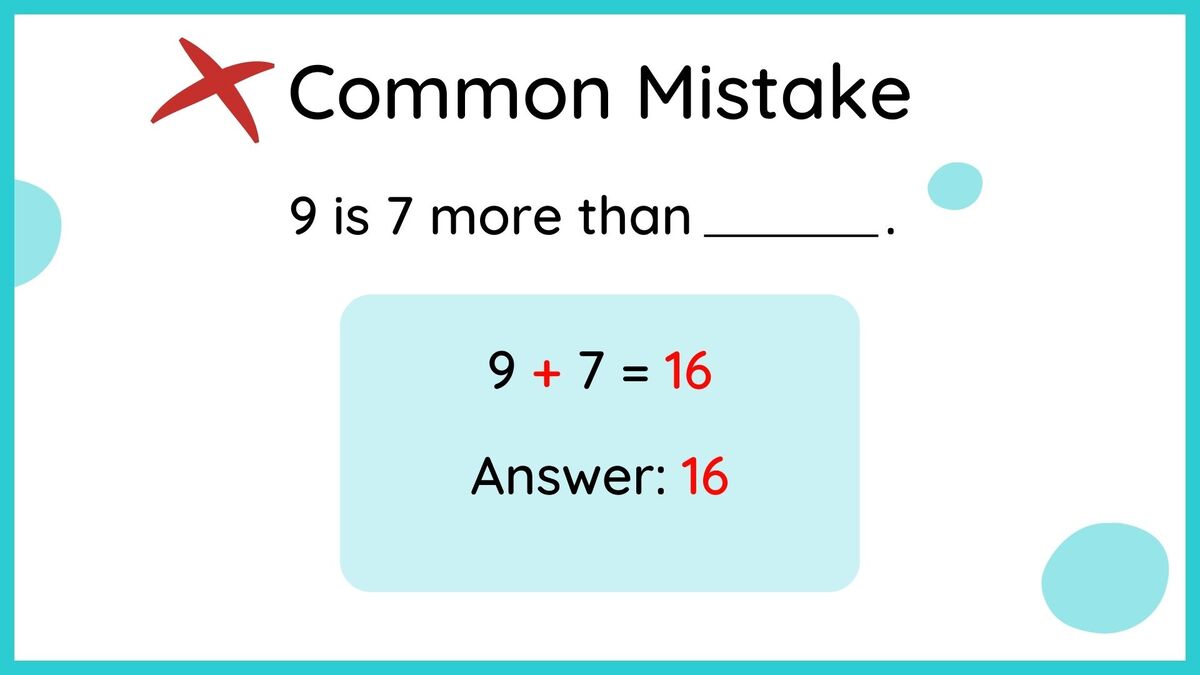
Solution
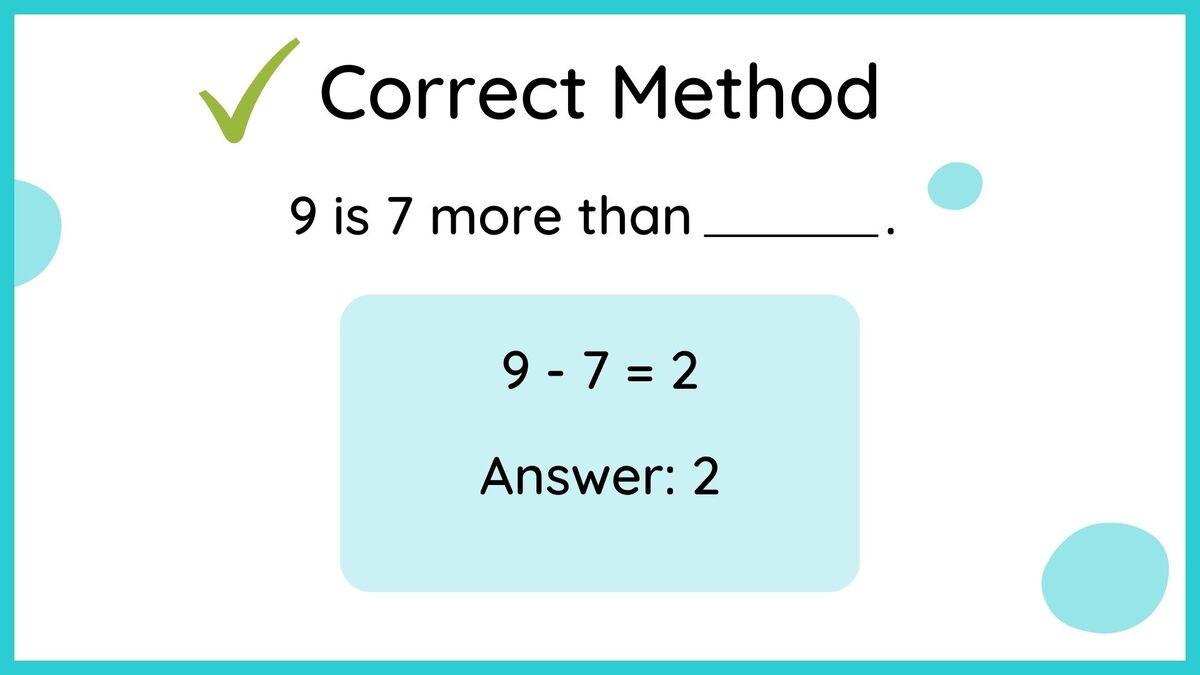
How to prevent this mistake
For comparison questions, breaking down the solution process into steps will make it easier for students to understand and follow.
Step 1: Figure out whether the comparison value belongs to the number or the blank.
Looking at the example question above, students should ask themselves: does “7 more” belong to 9 or to the blank?
To find out the answer, look at the keyword “is”. In the question, “is” comes right next to 9 and therefore links the comparison value 7 to 9. Hence, “7 more” belongs to 9. You can annotate by using arrow as shown below.

Step 2: Find out if we are looking for a bigger or smaller number.
Now that students know “7 more” belongs to 9, the blank should be 7 less. Thus, they are looking for a smaller number.
To solve the question, students can use subtraction to find the answer (9 – 7 = 2).
With this step-by-step approach, students will be able to understand how to do comparison questions like this.
Try out this question using the same technique with your child!

Common Mistake #3: Unsure When to Multiply or Divide
In P1, students just started to learn about the topic of multiplication and division and they may be unsure when they should use multiplication or division.
How to ensure students apply the operation sign correctly
The trick is to look out for certain keywords in the question. Once you’ve identified the keywords, students will be able to know whether they should multiply or divide. Let’s try this question below:
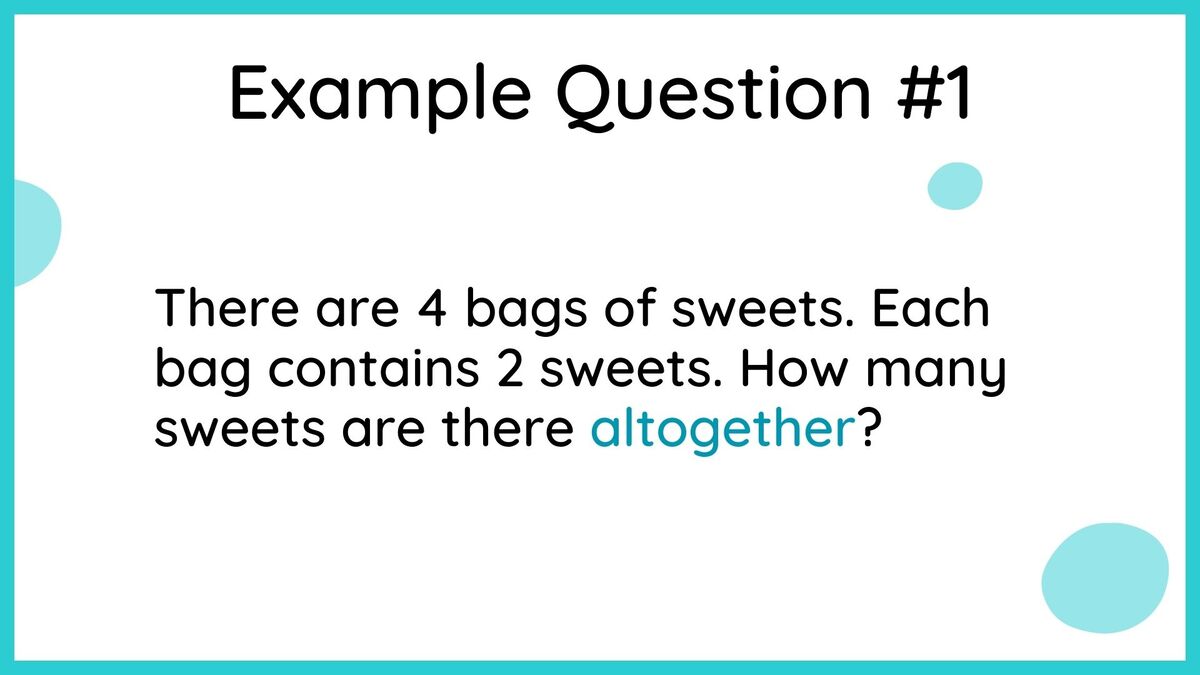
The keyword here is altogether. When the question involves finding the total number, students should use multiplication to find the answer. Other relating keywords to look out for include in all and in total.
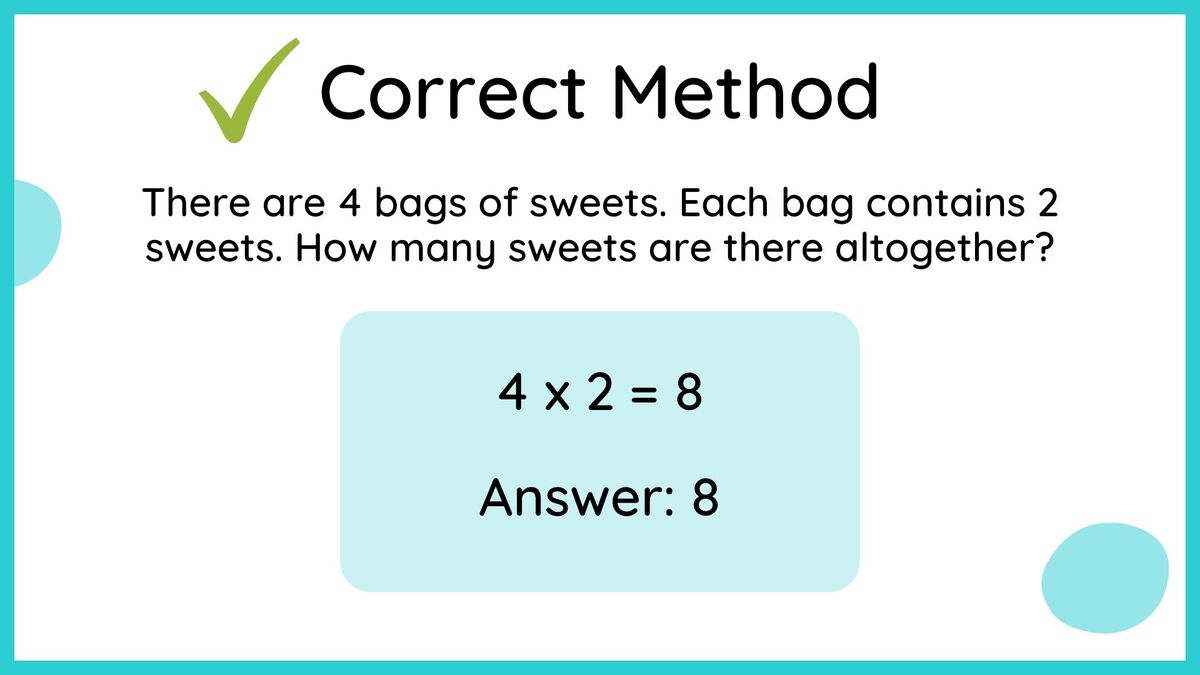
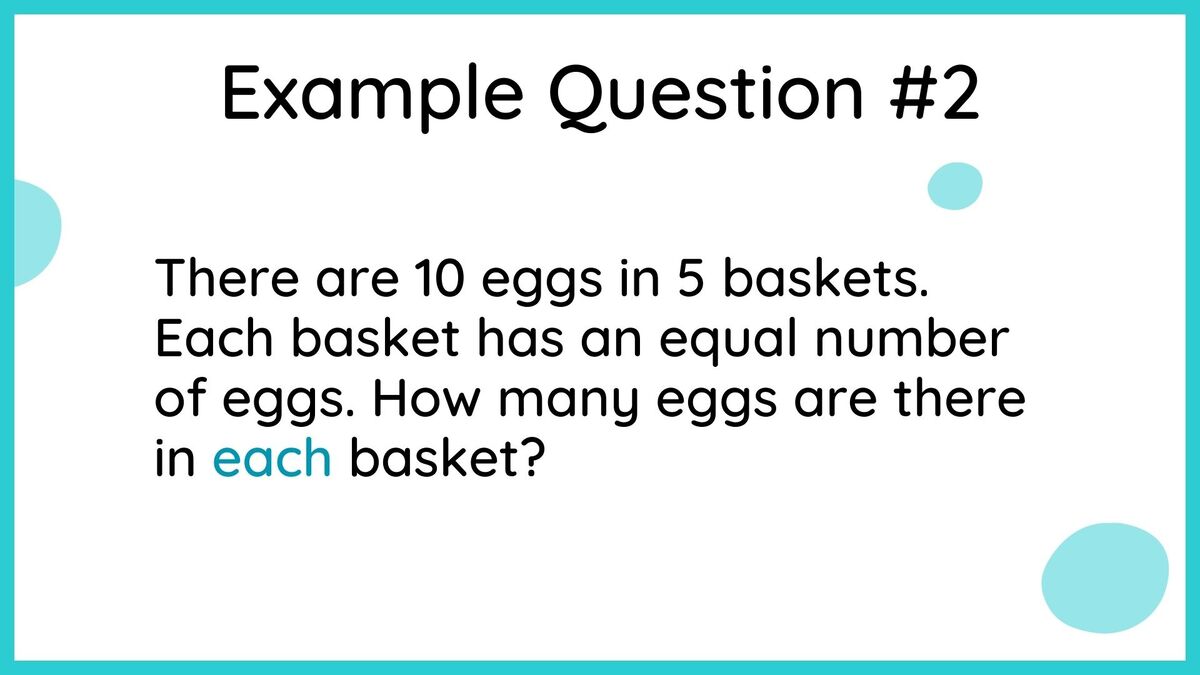
For this question, the keyword here is each. Thus, we have to use division to find the answer.
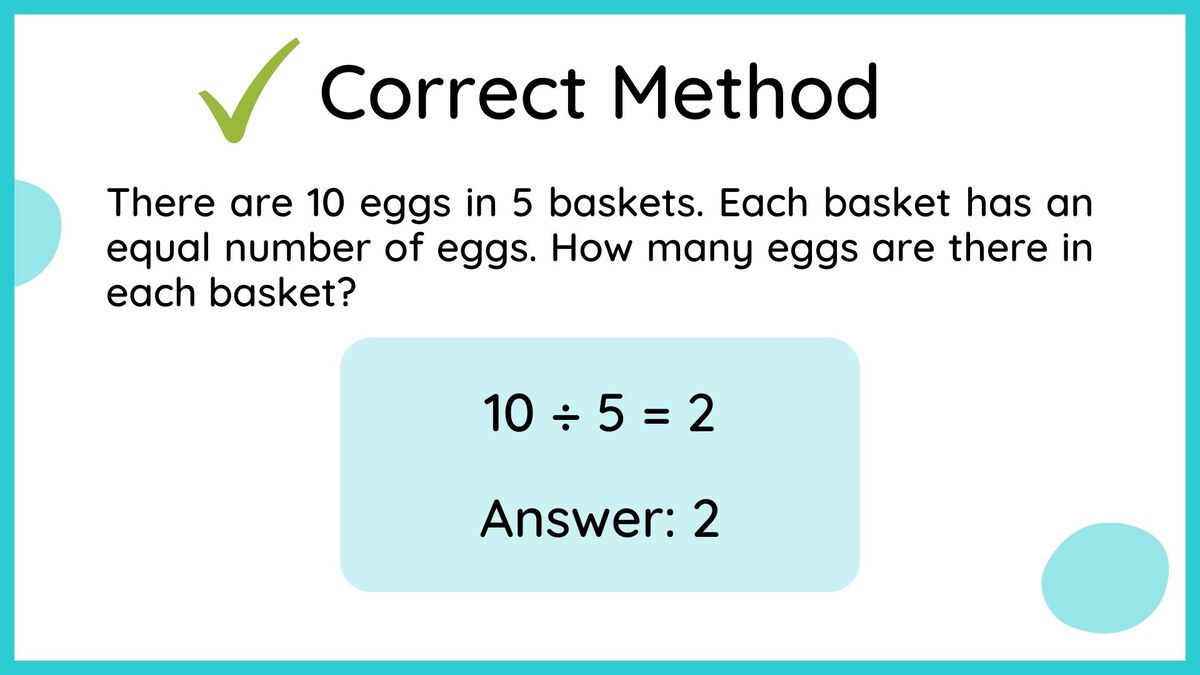
Overcome mistakes and become a math ace
We hope that you’ve found our tips and tricks helpful for avoiding the common math mistakes in primary 1! Remember, making mistakes is a natural part of the learning process. Most importantly, your child should learn from their mistakes and make sure not to repeat them. With proper support, your child can overcome learning obstacles and progress in their math abilities.
At Spark Math, we believe that every child has the potential to excel in math. Take a look at our programmes and learn more about how Spark Math develops children into confident and motivated math learners! To get started, sign up for a free trial class.
Check out other posts in our Top 3 Common Math Mistakes and How to Avoid Them series:




